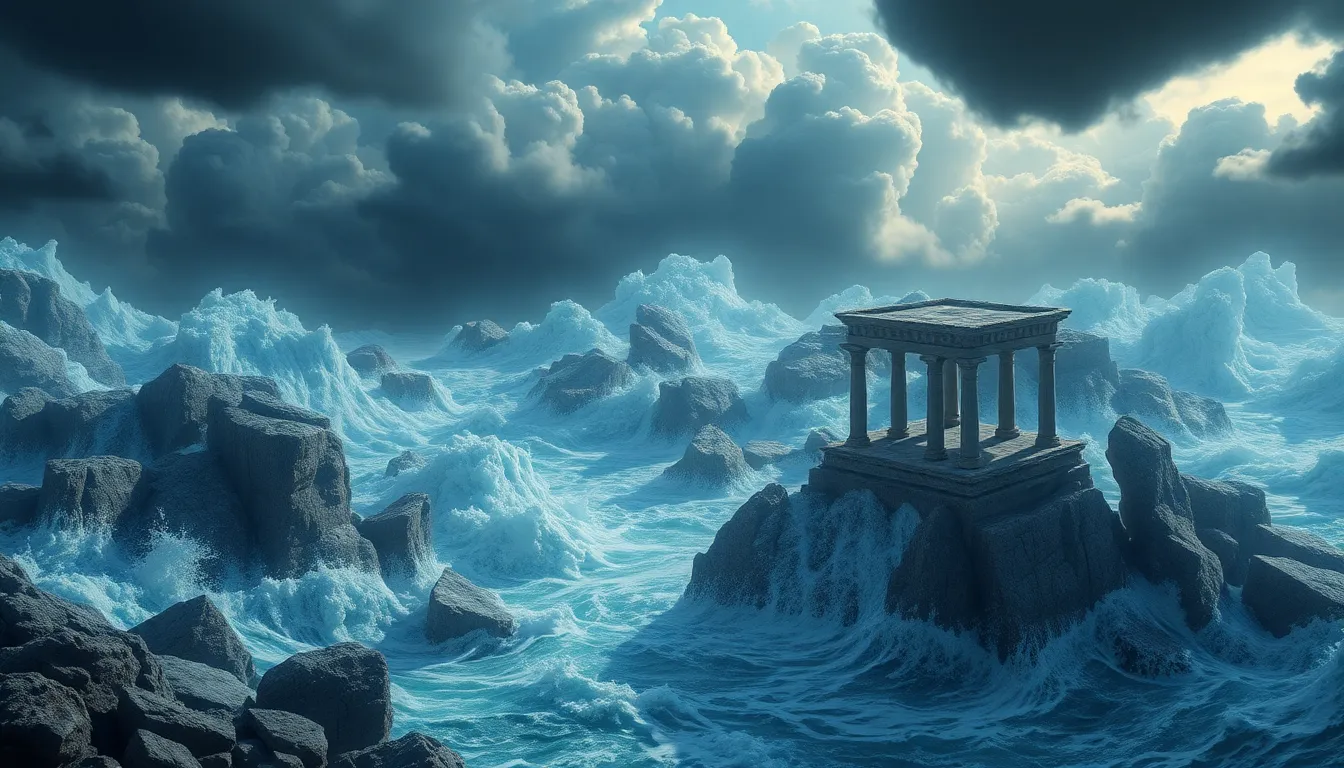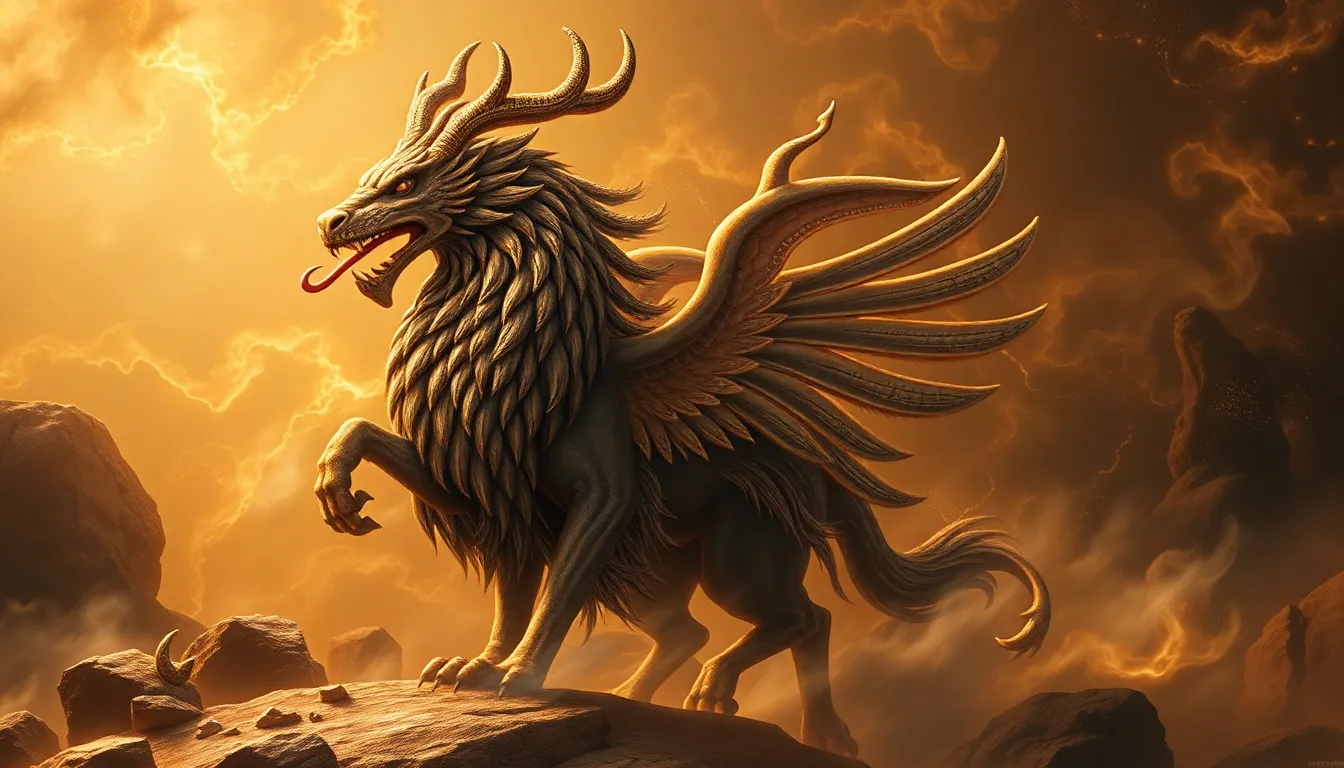The Floods of the Mediterranean: Myths from Ancient Civilizations
I. Introduction
The Mediterranean region, characterized by its rich history and diverse cultures, has long fascinated scholars and enthusiasts alike. Spanning three continents, this sea has been home to ancient civilizations that shaped the course of human history. One recurring theme in the narratives of these cultures is that of floods—natural disasters that not only devastated landscapes but also inspired profound mythological tales.
Floods in ancient mythologies often symbolize destruction and rebirth, serving as cautionary tales and reflections of humanity’s relationship with nature. This article delves into the flood myths from various ancient civilizations around the Mediterranean, examining their historical contexts, cultural implications, and lasting legacies.
II. The Historical Context of Flood Myths
Natural disasters, particularly floods, have played a significant role in shaping cultural narratives throughout history. These events often lead to the creation of myths that reflect the values, fears, and beliefs of the societies affected. Floods are a universal theme across civilizations, often representing divine retribution or the cleansing of humanity.
To analyze these ancient flood narratives, scholars employ a variety of methodologies, including:
- Textual analysis of ancient manuscripts and inscriptions
- Comparative mythology to identify similarities and differences
- Archaeological evidence to connect myths with historical events
III. The Epic of Gilgamesh and the Great Flood
The Epic of Gilgamesh, one of the oldest known literary works, contains a compelling flood narrative that parallels other flood myths. In this epic, the protagonist, Gilgamesh, seeks the secret to immortality and encounters Utnapishtim, a character akin to Noah, who survived a great flood sent by the gods.
The flood narrative in the Epic of Gilgamesh includes several key elements:
- A divine warning
- The construction of a large boat
- The preservation of life—both human and animal
- A post-flood covenant between the gods and humanity
This story shares striking similarities with other ancient flood tales, including the Hebrew Bible’s account of Noah and the Greek story of Deucalion. The cultural implications of the flood story in Mesopotamia reflect the civilization’s understanding of divine power and human mortality.
IV. Greek Mythology: Deucalion and Pyrrha
In Greek mythology, the tale of Deucalion and Pyrrha serves as a poignant narrative of survival and renewal. Deucalion, often seen as the Greek equivalent of Noah, is warned by the god Zeus about an impending flood meant to cleanse the earth of human wickedness.
After the flood, Deucalion and Pyrrha repopulate the world by throwing stones over their shoulders, which transform into humans. This myth embodies themes of rebirth and the cyclical nature of life, emphasizing the resilience of humanity in the face of catastrophe.
The geographical features of Greece, characterized by its islands and mountainous terrain, heavily influenced these flood narratives, reflecting the region’s unique relationship with water and nature.
V. The Flood in Ancient Egyptian Mythology
The Nile River, a lifeline for ancient Egypt, experienced seasonal floods that were crucial for agriculture. The Egyptians revered these floods, viewing them as a gift from the gods that replenished the soil and ensured bountiful harvests.
Myths surrounding the goddess Nut, who personified the sky, also feature celestial floods that connected to the agricultural cycles of the Nile. The Egyptians believed that her body arched over the earth, and her tears created the Nile, thus intertwining their understanding of floods with their agricultural practices.
VI. The Floods of the Hebrew Bible
The story of Noah’s Ark in the Hebrew Bible is perhaps the most famous flood myth in Western culture. This narrative shares commonalities with other Mediterranean myths, including the themes of divine wrath, human sinfulness, and eventual salvation through obedience.
The theological implications of the flood narrative are profound, addressing themes of covenant, mercy, and judgment. The flood serves as a means for God to cleanse the earth, ultimately leading to a renewed creation.
When compared with neighboring cultures’ flood myths, such as that of the Epic of Gilgamesh, it is evident that these stories reflect a shared understanding of morality and humanity’s relationship with the divine.
VII. The Phoenician Perspective on Flood Myths
The Phoenicians, known for their trade and maritime prowess, had rich mythological tales influenced by their seafaring lifestyle. Their stories often featured the god Baal, who represented storms and fertility, and seasonal floods were seen as manifestations of his power.
The influence of trade and travel allowed for the exchange of mythological narratives across cultures, leading to a tapestry of flood stories that shared common elements while also reflecting local beliefs. The Phoenician perspective on floods emphasizes the connection between the sea, agriculture, and the divine.
VIII. The Roman Interpretation of Flood Myths
The Romans adapted many Greek myths, including those of floods, into their own cultural framework. The tale of Deucalion was reinterpreted in Roman literature, reflecting the influence of Greek thought on Roman religion and mythology.
Flood myths in Roman culture often served as allegories for societal values, emphasizing themes of virtue and the consequences of vice. The legacy of Roman flood narratives can be seen in later European folklore, where these stories continued to resonate with audiences.
IX. The Archaeological Evidence of Floods in the Mediterranean
Archaeological findings have provided valuable insights into the historical realities of ancient floods. Excavations in regions such as Mesopotamia and the eastern Mediterranean have uncovered evidence of catastrophic flooding events that correlate with the timelines of flood myths.
Case studies of specific archaeological sites, such as:
- The ruins of ancient Ur and its flood layers
- Settlements along the Nile River
- Coastal cities affected by tsunamis
These findings highlight the relationship between myth and historical events, illustrating how societies interpreted natural disasters through the lens of their cultural narratives.
X. Conclusion
The enduring legacy of Mediterranean flood myths continues to captivate modern culture, influencing literature, art, and religious thought. These ancient stories serve as reminders of humanity’s vulnerability to nature and the cyclical patterns of destruction and renewal. By examining the flood narratives across various civilizations, we gain insight into the shared human experience and the ways in which cultures have sought to understand their world through myth.



